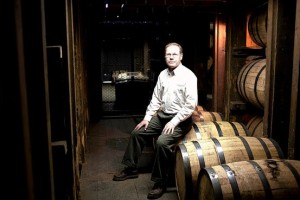While I was away from work on vacation last month, several co-workers – knowing my love of whisky and of all things drinking – dropped a few news clippings on my desk for me to peruse when I returned. The information included two newspaper articles, one from The New York Times and another from The Wall Street Journal, as well as a brochure for a new distillery in central Virginia. Together, this stack provided a much-need (and appreciated) diversion from cleaning out my email inbox.
Here’s a rundown of the info, none of which made sitting at my desk after a wonderful vacation filled with booze and sunshine any easier. But I appreciated the thought; thanks guys.
“Canadian whisky has an image problem,” writes Robert Simonson; it is “the unglamorous workhorse of the whisky world, producing dependable, light-bodied, mixing whiskies derided by booze connoisseurs as ‘brown vodka.’” But Canadian distillers are looking to change that image by returning to their roots. New, independent distilleries – some of which are aging their whisky in Canadian oak barrels, not American ones – are employing “sleek packaging and nods to small-scale production [that] suggest what they’re meant to deliver.” Namely, a smooth, rich, full-flavored whisky that is classically Canadian. The article also provides a Scouting Report of “new-style Canadian whiskies available in some cities in the United States.”
Read Simonson’s article, Distillers Take a New Approach to Canadian Whiskies
Farther south, in Versailles, Kentucky, Chris Morris is a busy man. Working as the master distiller in a distillery dating back to the 1830s, Morris “oversees the process for Woodford Reserve, a premium bourbon.” Although drinking for a living sounds like the dream job, it hasn’t always been so choice: he’s “done everything from sweep the floors to work in the company’s sophisticated laboratory, breaking down the chemicals in alcohol.” Morris prides himself on “modernizing old practices” and documents his experiments and tastings with extensive notes, “a surprisingly complex task because of the many things that can affect a whiskey’s flavor.”
Read the Journal’s review, Distilling a Lifetime of Whisky Knowledge
Just east, over the Appalachians, a new distillery began production late last year. The Virginia Distillery Company has (thus far) produced three expressions of their Eades Small Batch Double Malt Whisky – a Speyside, a Highland, and an Islay – whose component malts are between 10 and 18 years old.
The company will also produce a single malt that will be “the first and only in America to produce double-distilled single malt whisky using authentic, Scottish-made copper pot stills.” Virginia’s unique climate will also create a special whisky: “As our whisky ages inside the cask, the dramatic fluctuations in temperature and humidity as the seasons change will cause the wood to expand and contract. These dynamic forces will draw the whisky into and out of the wood of the cask much faster than it would in a typical Scottish warehouse.”
Read more about the Virginia Distillery Company, located in Lovingston, Virginia





Canadian Eh!! “unglamorous workhorse” – Love it!!